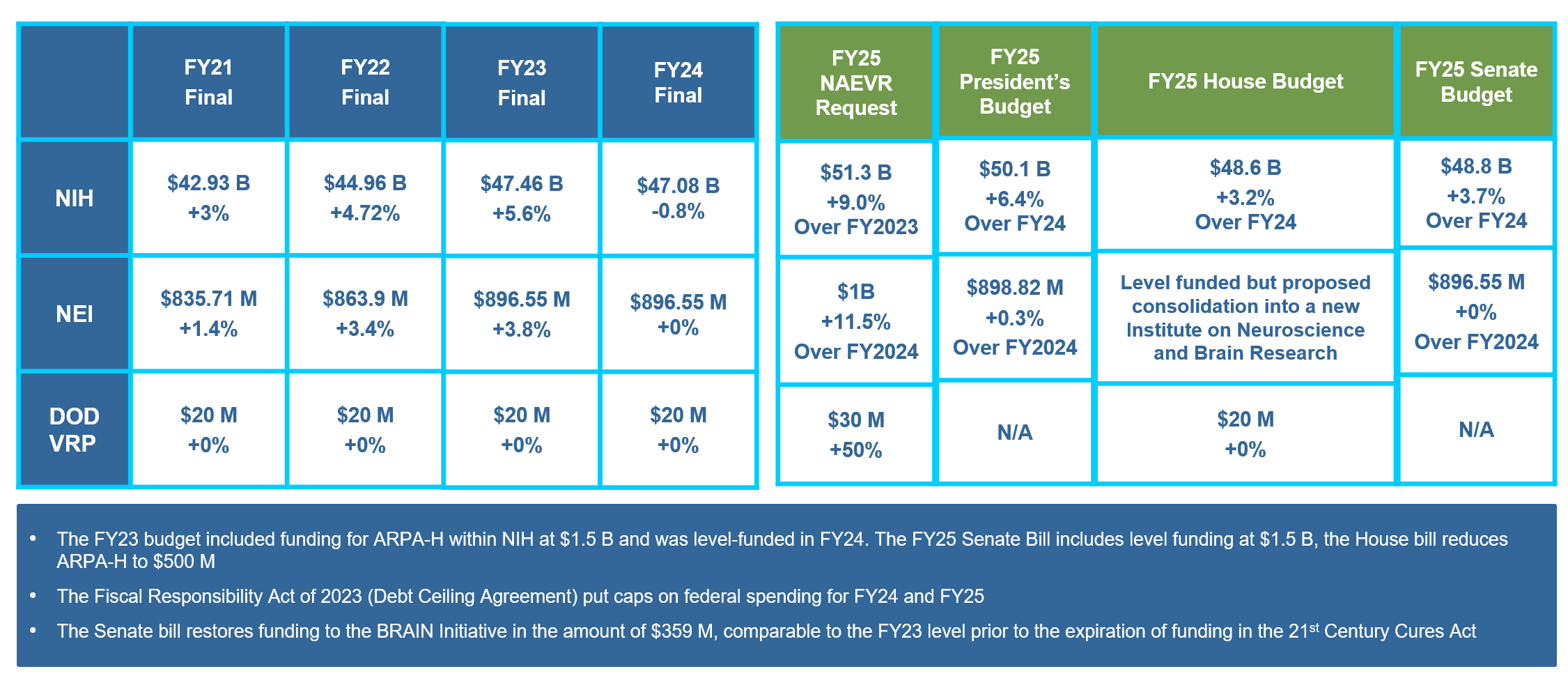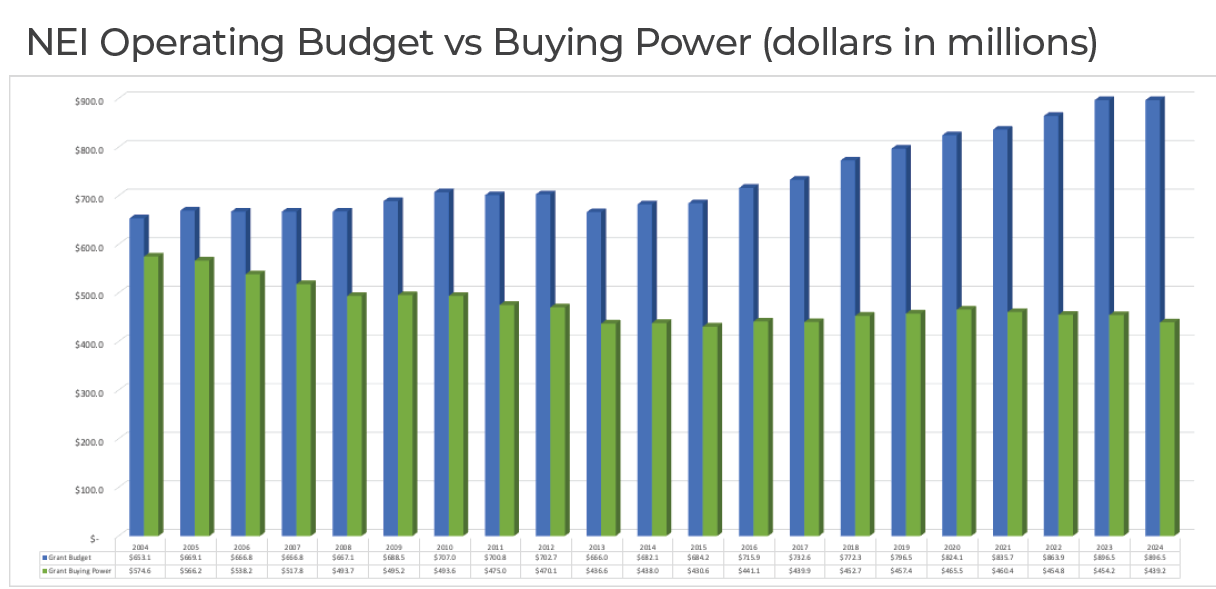
In May 2025, NAEVR submitted a FY26 appropriations sign-on letter to Congress on behalf of more than 100 organizations representing research institutions, patient groups, academic centers, medical societies, and industry. The letter urges Congress to:
Reject the proposed consolidation of the National Eye Institute (NEI)
Oppose the 15% indirect cost cap on NIH-funded research
Increase NEI funding to $1 billion in FY26 to match growing public health needs
This letter demonstrates the vision community’s unified voice in support of federally funded sight-saving research.
Our alliance with NEI is deeply rooted in our shared commitment to advancing vision research.
We work tirelessly to advocate for increased federal funding, ensuring that NEI has the resources needed for groundbreaking treatments.
From championing the importance of basic science to amplifying the impact of translational research, we connect the dots between policymakers, researchers, and the public.
Through educational initiatives, such as Congressional Briefings and advocacy days, we bring NEI-supported research to Capitol Hill.
By advocating for robust and sustained funding, we empower NEI to transform lives, ensuring a brighter future for all Americans.
We help underscore how federal investment in vision science yields profound returns—not only in terms of health but also economic and societal benefits.
While we deeply appreciate Congress’s commitment to sustaining funding for vision research, level funding amidst rising costs equates to a reduction in resources, limiting the potential for critical advancements. We support the urgent need for increased investment in the mission to protect and restore vision, ensuring that cutting-edge research continues to improve quality of life for millions of Americans.

Despite the budget for the National Eye Institute increasing by 27.6% over the last decade (from $702 million in 2012 to $896.5 million in 2024), the 32.8% biomedical inflation over the same period means the net change after adjusting for inflation is actually -5.2%.Despite the funding increases provided by Congress over the last decade, we have failed to keep pace with inflation. As a result, the National Eye Institute’s purchasing power to invest in vision research in 2024 is lower than it was in 2012, as highlighted in the chart below.
Even with the anticipated growth of major eye diseases and an aging population, it’s crucial to prioritize investment in vision research. Vision researchers are at the forefront of groundbreaking advancements in gene therapies, imaging technologies, artificial intelligence, big data, and regenerative medicine. It’s essential to support these researchers in their quest to preserve sight and restore vision.


Strengthening Advocacy and Partnerships for Vision Research
We’ve intensified its advocacy efforts to protect and strengthen federal support for vision research, ensuring that the NEI remains a dedicated institute within the NIH. Through coalition building, congressional engagement, and strategic partnerships, we continue to champion policies that advance vision science and safeguard the future of federally funded research.